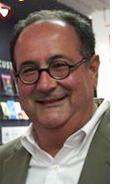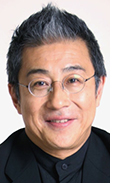Architecture lecture series hosts six design masters in spring 2014
Design luminaries will share their knowledge and experiences with Texas A&M students in the Spring 2014 Department of Architecture Lecture Series. The public lectures will take place at 5:30 p.m. in Preston Geren Auditorium in building B of the Langford Architecture Center.
Lectures by Michael Webb, Rafael Longoria and Marcelo Spina can be viewed on this page.
February 3
Michael Webb
Architect, educator
 Michael Webb, professor of architecture at The Cooper Union, will present “Roots: Architecture Scene: London ’60-65,” February 3.
Michael Webb, professor of architecture at The Cooper Union, will present “Roots: Architecture Scene: London ’60-65,” February 3.
In the 1960s, Webb was a member of [The Archigram Group] (http://www.archigram.net/about.html) , a collection of six young London architects who championed a playful, pop-inspired vision of a technocratic future, rebelling against what they saw as a stodgy English architectural scene. The group published a series of iconic magazines that contained the members’ architectural concepts and screeds against the status quo of English design.
Webb studied architecture at Regent Street Polytechnic in London, taking seventeen years to graduate from a five-year program. His thesis design, The “ [Sin Centre] (http://architecturewithoutarchitecture.blogspot.com/2012/12/the-sin-centre-sin-centre-also-known-as.html) ” earned a failing grade even after it was exhibited at New York’s Museum of Modern Art. The design featured a bowling alley, cinema, coffee bars and a large retail store at ground level.
An exhibition, “ [Archigram,” Experimental Architecture] (http://www.sac.or.kr/eng/lab2003/archigram/) ,” opened in Venice in 1994 and toured the world for a decade. The group’s enduring influence is cited by later generations of architects, including renowned architect Rem Koolhaas, who described the group’s ideas as among the last “new movements in urbanism.”
February 17
Rafael Longoria
Architect, author, educator
 Rafael Longoria, professor of architecture at the University of Houston, will present “Planet Houston” Feb. 17 in Geren Auditorium.
Rafael Longoria, professor of architecture at the University of Houston, will present “Planet Houston” Feb. 17 in Geren Auditorium.
Longoria co-edited “ [The Green Braid: Towards an Architecture of Ecology, Economy and Equity] (http://www.amazon.com/The-Green-Braid-Architecture-Architectural/dp/0415415004) ,” a 2007 book that places sustainability at the center of excellent architectural design through a series of peer-reviewed essays published by the Assocaition of Collegeiate Schools of Architecture.
He champions designs that respond to a locale’s climate and public spaces and increase people’s housing and transportation options. His interest in improving Houston’s quality of life has led to service on a number of nonprofit civic organizations such as the [Rice Design Alliance] (http://ricedesignalliance.org/) , the [Houston Arts Alliance] (http://www.houstonartsalliance.com/) , the [Park People] (http://archon.lib.uh.edu/?p=creators/creator&id=226) , [Preservation Houston] (http://www.preservationhouston.org/) , and the [Memorial Park Conservancy] (http://www.memorialparkconservancy.org/) .
Longoria also heads Wonderworks, a nonprofit organization providing Houston high school students with learning experiences in fine arts, literature and media. Wonderworks offers a diverse selection of courses to gifted students who might otherwise be unable to explore these areas in their schooling.
March 24
George Kunihiro
architect, educator
 In addition to heading a small firm designing residential and commercial projects and teaching as a professor of architecture at Kokushikan University in Tokyo,
George Kunihiro
serves the architectural profession in Asia through his associations with numerous design organizations.
In addition to heading a small firm designing residential and commercial projects and teaching as a professor of architecture at Kokushikan University in Tokyo,
George Kunihiro
serves the architectural profession in Asia through his associations with numerous design organizations.
“Practice is great,” he said, “but serving the professional community is something I never thought I’d have the chance to do. It’s been very intense, but it has been valuable and satisfying.”
Kunihiro, a member of the American Institute of Architects’ College of Fellows, is a member of the Japan Institute of Architects and has served as a council member of the International Union of Architects, the Architects Regional Council of Asia and vice chairman of the Modern Asian Architecture Network.
“Asia is a really great place for development,” he said. “In many ways, the 21st century is the Asian century. This is a modern place with a lot of development taking place and a lot of opportunities for international practice.”
After earning a Master of Architecture from Harvard’s Graduate School of Design, Kunihiro opened a firm in San Francisco in 1980, which he later moved to New York. Since 1997, he has lived and practiced in Japan.
March 31
Marcelo Spina
Architect, educator, curator
 Marcelo Spina, is co-founder of
[P-A-T-T-E-R-N-S]
(http://www.p-a-t-t-e-r-n-s.net/home/)
, a Los-Angeles based design/research architectural practice that aims to generate innovative spatial forms for public, residential and commercial sites through an integration of digital technology with the extensive consideration of form and innovative materials.
Marcelo Spina, is co-founder of
[P-A-T-T-E-R-N-S]
(http://www.p-a-t-t-e-r-n-s.net/home/)
, a Los-Angeles based design/research architectural practice that aims to generate innovative spatial forms for public, residential and commercial sites through an integration of digital technology with the extensive consideration of form and innovative materials.
Spina also leads graduate design studios and technology seminars at The Southern California Institute of Architecture.
In 2004 the firm was recognized as one of the 11 most progressive offices working worldwide by Architectural Record Design Vanguard issue.
In addition to his professional and academic work, Spina and Huljich, his P-A-T-T-E-R-N-S co-founder, were the curators of “ [Matters of Sensation,] (http://artistsspace.org/exhibitions/matters-of-sensation) ” an exhibition of work by young architects that opened to critical acclaim in 2008 at Artists Space, a New York gallery.
Spina holds a Professional Degree from the National University of Rosario and a Master in Architecture from Columbia University in New York where he was the recipient of several honors including the William Kinne Fellowship and the Honor Award for Excellence in Design.
April 14
Gilles Retsin
Architect, educator
 Gilles Retsin, a London-based architect who also leads London’s Bartlett School of Architecture’s graduate architectural design program, will present “The Bartlett” April 14 at Preston Geren Auditorium.
Gilles Retsin, a London-based architect who also leads London’s Bartlett School of Architecture’s graduate architectural design program, will present “The Bartlett” April 14 at Preston Geren Auditorium.
He also founded [SoftKill Design] (http://www.softkilldesign.berta.me/) , a design collective whose members are attempting to create [Protohouse 2.0] (http://www.3ders.org/articles/20130213-protohouse-2-first-3d-printed-home-can-be-assembled-within-a-day.html) , the world’s first residence to have all its elements — the walls, flooring, roof, etc. created by an offsite 3-D printer.
At his practice, Retsin seeks to develop new insights into the intersections of design visual arts, architecture and cities and lectures about computing and design at the University of East London.
He has lectured and taught extensively in Germany, France, Finland, Belgium, Switzerland, the UK and China.
April 23
Bruno Juricic
Architect, curator
 Bruno Juricic, an architect, curator and Ph.D. student at the University of California-Los Angeles will present TAT LAB on April 23.
Bruno Juricic, an architect, curator and Ph.D. student at the University of California-Los Angeles will present TAT LAB on April 23.
In his dissertation, Juricic is creating a geneaology, from post-World War II to the present, of architecture engaged with questions about the relationship between art and architecture.
Juricic is the founder of the [Mediterranean Laboratory for Architecture and Urban Strategies] (http://proto-e-co-logics.mlaus.net/index.html) , a private institute in Croatia whose members perform research and developmental work in architecture and urban planning and promote economic activity by linking public and private sectors through academic knowledge and skills. Juricic was invited by the European Union’s Ministry of Culture and Foreign affairs to talk about the project at a conference in 2011.
He also organized “Proto/E/Co/Logics 002: The Field is Open,” which discussed the blurring of architectural boundaries by transformations in construction and manufacturing, such as 3D printers.
Jurcic earned a Master of Science in Urban Strategies at the University of Applied Arts in Vienna.
Tags
Related Posts

Former students featured at 2014 Rowlett Lecture
Luminaries speak at arch. lecture series
Design masters from Americas lectured this fall at TAMU
Spring architecture lectures feature designers, theorist

13 outstanding alums share how college aided their success
Follow Us
Facebook Twitter Vimeo Youtube Flickr RSS
Recent Posts

Planning prof heads study of disaster housing aid

A message from the dean

Former student remembered as expert planner

Leading educator named new head of Architecture Dept.




_thumbnail_small.png)
